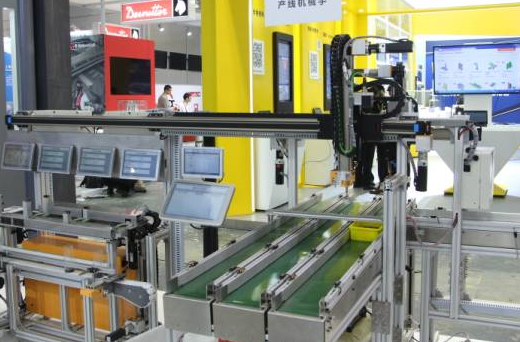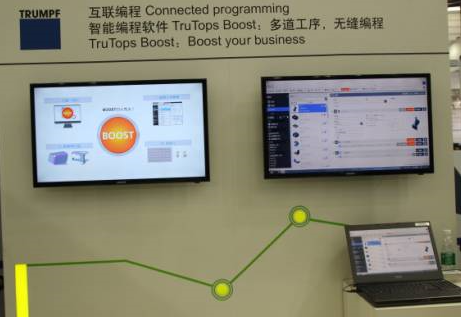The technology of Internet of things is reshaping the whole manufacturing industry, integrating a new generation of information technology on the basis of automation to realize the digital transformation of the production line. From the factory level, the development of Internet Interconnection simplifies the process of equipment maintenance. From the aspect of customer service, the Internet of things helps enterprises achieve more comprehensive services. Industrial networking will create huge revenue for the manufacturing, manufacturers began to embedded in their products in some sensors to collect the related information, including monitoring of product materials, performance and use of the information in real time, to help enterprises to adjust the production plan and optimize product performance.
From the airplane to the automobile engine and medical equipment, such as in the development of products will be built in sensor parts, so as to enhance the performance of the product, make the product more secure, can be long-term use. The manufacturer can achieve predictive maintenance before the problem appears, and reduce the downtime and maintenance cost fundamentally. The use of the Internet of things has improved the intelligence quotient of the customer, and a new round of production model with the core of intelligent manufacturing is approaching fast. According to the relevant agencies, the global Internet of things expenditure will reach $70 billion by 2020.
Real-time diagnosis of improving product quality
The whole life process of a product is in the process of monitoring and data acquisition from design to production to user. Through the embedded sensor and controller can help customers find the product potential, and then feedback to the design and production departments, making products in the design, material selection and reasonable production process to avoid some misunderstanding. At the same time, the vendor can collect information about the details of the customer's use.

Usually, equipment vendors do not know what happens to their devices on the spot until they call feedback. Some vendors do a customer survey every other time to understand the truth of the use of the product. Unless the monitoring sensor is installed inside the product, the manufacturer and sales will not realize where the equipment is out of the problem and can only wait for the customer to complain.
Many vendors have the same problem, very little about the product installation run at the customer site is known. In the era of Internet of things, information about device temperature, fan running time and energy consumption can be reported to manufacturers through the network. Manufacturers may consider real-time diagnosis in commercial applications.
Remote monitoring by sensor
Based on the reception and analysis of device data, the manufacturer can help the customer to avoid failure and improve the efficiency of the machine. These companies can also collect technical data to adjust the design of products and components to make their performance better and more durable. The first is to avoid problems in the design, and the second is to take corrective action after production, such as repair, maintenance or replacement.
Manufacturers can perform data acquisition in almost all manufacturing processes, these data will help to optimize the production plan, how to use the resource facilities to guide enterprises to enable enterprises to better use of idle equipment and machinery. In the product built-in sensor data acquisition, can help companies achieve products after leaving the factory, by recording equipment data, and compare the performance of equipment in different environments, by which you can dig out the problem of low operational efficiency, so as to avoid the fatal failure.
Through analysis or using data, manufacturers can make more appropriate preventive maintenance and maintenance plan, rather than wait for faulty equipment to handle. Sensor data can help manufacturers to get early warning and determine what must be maintained, so as to achieve optimal performance according to the device's performance parameters.
Remote monitoring (RCM) is one of the basic services, is also an important factor affecting the quality of customer service. In the support of after-sales service, the ability to access product status information in real time is very useful, especially because it can solve product problems more effectively from the root cause analysis. The next step of remote state monitoring is obviously predictive maintenance. We use sensors, such as thermal imaging, acoustic and ultrasonic vibration analysis, to detect before problems occur. The Internet of things provides a good way for enterprises to improve customer service and promote sales.
Of industrial networking opportunities but also great challenges, security and privacy is one of the important concern of industry. Unsafe connection devices may provide a backdoor for all attacks, which not only harm consumers, but also make the industrial Internet of things providers suffer.
From passive maintenance to active maintenance
Predictive maintenance based on big data of IOT is becoming popular. According to analysis, 1/4 manufacturers have tracked the performance of products through predictive maintenance software. Manufacturers are increasingly interested in the use of the Internet of things, and the estimated maintenance market size will increase from $580 million in 2015 to $1 billion 880 million in 2020.
Manufacturer is sorting the data from the assets utilization, insights and analysis of fault prediction and enhance the life of assets in asset value chain. For example, the required information is sent to the central system when a specific component or part of the best asset of the asset function is sent to the central system through machine data technology and remote monitoring applications.
To establish a customer-oriented service ecosystem, companies need to install their basic maintenance data acquisition products. The value of the basic information of real time collection is greatly improved. They have produced new customers, improved after-sales service and profitability. The installation of basic remote monitoring also creates the possibility of providing remote services.

Most importantly, it will generate a new source of revenue, while improving customer satisfaction, so that manufacturers can offset the decline in income in the economic downturn. Informatization solves the problem of sudden shutdown or failure caused by inadequate inspection of asset management team, and connects physical assets, people and processes seamlessly through the Internet of things. Many manufacturing enterprises use the Internet of things to monitor production, so as to reduce costs, improve safety, create more powerful products and improve overall equipment efficiency.
In the era of things, the factory can visualize the workshop more, improve production efficiency, enhance profitability. Predictive maintenance can optimize the normal running time and planned shutdown time, and the customer's orders can be satisfied in time. Besides, as a predictive maintenance plan, it is necessary to use a central database to identify spare parts, asset status and customer orders, track costs and ensure proper financial management.
Choosing the appropriate analytical model
The Internet of things is becoming a powerful force for change. It is an indispensable technology for manufacturing enterprise equipment maintenance and enhancing customer experience. The trend of the Internet of things will improve the use of composite analysis models, and manufacturers can also choose traditional analytical models to achieve these goals.
The analysis model of the traditional distinction between repairable and non repairable parts, cycle prediction of equipment failure. Harvatek these models make use of historical failure time data to determine the future failure time of the parts. In this case, the manufacturer obtains detailed data from the sensor, which is proved to be particularly useful. Unlike the composite model, the failure of the part is also a determining factor. This function can exceed the general characteristics of the traditional analysis model.
For manufacturers, the next question is which model is more suitable for their specific needs. In this regard, several problems need to be considered. First of all, data availability is an important factor. When data cause parts failure and information part failure event is available, selecting composite model is more suitable. On the other hand, when only data retrieval is required, the traditional model is often more appropriate. The selection of other factors influence analysis is partly repairable or non repairable to fault prediction and the life cycle stages of parts are completely different. In the right way, manufacturers can raise their predictive maintenance to a new level. As more and more players are aware of this, we will see a smarter and more efficient manufacturing enterprise in the industry.





